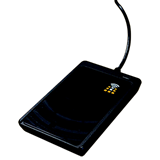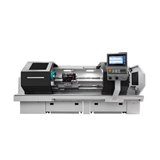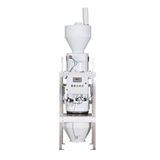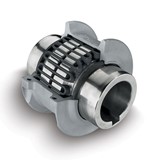The car's battery indicator is low on the drive back from the business trip, so you plug it into the charge in your garage when you arrive home. It's a muggy day. You're relieved there is enough power to run the air conditioning units. Perhaps a swim is in order.
You ditch your coat and keys, flick off your shoes, and pad into the kitchen for a glass of cool water before hitting the pool. On the way you pause at the power monitor in the hall, taking a read. You smile. The solar panels on the roof have earned you a couple of hundred dollars in returned electricity while you've been away. But then your smile drops.
The status history on the monitor says that the grid has been under strain because of the hot weather, so the computer that runs energy use in your house has pulled the power from your pool pump. A glance out the window shows that your blue oasis is now peppered with leaf debris and a smattering of algae. Time to fetch the scoop, you think, chuckling at the thought that it, at least, doesn't require recharging.
Plug-in cars. Computer-run homes. Not too long ago the concepts would have sounded like something out of The Jetsons. But technologies such as these are moving out of the realm of cartoons and into the commonplace, as we adapt to a future where the creation and use of power will become more challenging.
Professor David Hill says the greatest challenge for the future of energy supply is uncertainty. The Federation Fellow in the ANU College of Engineering and Computer Science says this becomes evident when you compare the way that power systems used to be designed with how they're going to need to be designed in the years ahead.
"In the past, power systems were centrally planned," Hill says. "Engineers would do projections of load growth in a major urban area, like Sydney, and then they would make proposals for the building of new power plants. The lead times for this cycle could be 10 years, especially when environmental restrictions came in."
Hill says that projections of the future are very different, as environmental, resource and political pressures force us to use a much more diverse mix of power sources. Instead of a system almost wholly based on the burning of coal, power generation sources are also likely to include wind farms, solar plants, other forms of renewable energy, plus the possibility of nuclear. This patchwork of power generation, distributed throughout the system, means that it’s going to be more difficult to plan as far ahead.
"On the demand side, we also anticipate a lot of uncertainty," Hill adds. "I was recently in Detroit, in the USA, where they are trying to revamp their car industry, and the trend they are envisaging is towards plug-in hybrid vehicles. So the picture is of something much closer to the Internet, where we have a much higher plug and play capability. People plugging in their electric vehicles and expecting them to be charged up. And on the supply side we'll see things like wind farms. As you know, wind might be there or it might not be. We can expect much more volatility on the demand side and on the generation side. So uncertainty is the key thing we'll have to deal with."
Hill and his colleagues believe that, given all this uncertainty, we need more "end-to-end control." This means increasing the amount of monitoring that occurs along the power creation, supply and use continuum, but also ramping up the ability of smaller sections of a large power grid to respond to local problems. In effect, it's like taking a centralised brain and splitting it into many different pieces that can monitor what is happening in their part of the grid, communicate that information to other monitoring points, and then devise solutions on the home front. What could once be thought of in terms of centrally controlled supply and demand has to become more diffuse and increasingly canny. Welcome to the age of the 'smart grid'.
"We're talking about how, in a distributed way, we can make local decisions that hold the system together," Hill says. "This means providing all the voltages at the right level, the frequency at the right level, and a level of security as well so that things can go wrong and we still hold all these things that need to be regulated at set levels."
So what will a smart grid look like? In reality, it's likely to entail a network of computers talking to one another to sustain power supply, drawing on a diverse mix of traditional and renewable energy sources. And to find a node of this network, you might not have to look past your own home. Hill envisages a time when every house will include a computer that controls power use under that roof, while also relaying information back to the larger grid and responding as part of the wider system control.
Such a device could allow you to create priorities within your home, telling the computer which devices can be shut down first in the event of power shortages. The pool pump might be one of the first to go dark, while the fridge would be kept humming.
"It could be staged in a way that you are part of a control response to a problem in the network," Hill says. "So at one level it will help you be more efficient, to make more choices about how you’re using your energy. You may indeed be generating energy from your roof with a solar panel. But at another level you can be linked in to a system-wide network of distributed control which is helping keep the system together.
"All around me at ANU there are colleagues dealing with various aspects of this. My own area is distributed control. How, with a network of control, you carry out the decisions that are necessary to keep a large system working well. We work on power grids, we work on traffic networks, and we also did some work on the Internet. Conceptually, we design control architectures for distributed systems. The smart grid is a perfect example of such a development."
Hill estimates that it could be another 10 years before an advanced smart grid is operating in a neighbourhood near you. Yet instead of visualising this journey as an arduous climb to the final destination, Hill prefers to approach problems from a loftier vantage point.
"Although I was trained as an engineer and mathematician, I generally take a top-down approach in looking at complex situations. I look for the essential variables, interactions, any sensitivities and so on. I find I have a better chance of understanding how things work and figuring out how to control them this way. Control is definitely something that has to be pitched at higher level models. If you get too far down in the details you get overwhelmed and can do nothing. Also, with this systems view you can read about many areas outside your speciality such as the world economy and social behaviour with some engagement."
Smart grid coming soon: If you think that a smart grid for energy distribution sounds like so much pie in the sky, don't mention it to the American president. Barack Obama has committed $3.4 billion towards improving power delivery in the USA, naming the smart grid as a solution to rolling blackouts and ailing infrastructure. Closer to home the Rudd government is keen to establish smart grids in Australia, pledging $100 million towards the estimated $200 million cost of a demonstration system. Bids from industry were due in late January 2010.



-160x160-state_article-rel-cat.png)




